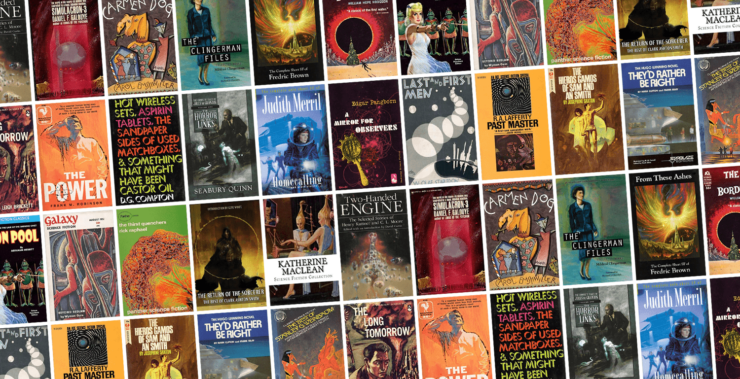Time is nobody’s friend. Authors in particular can fall afoul of time—all it takes is a few years out of the limelight. Publishers will let their books fall out of print; readers will forget about them. Replace “years” with “decades” and authors can become very obscure indeed.
The Cordwainer Smith Rediscovery Award was founded in 2001 to draw attention to unjustly forgotten SF authors. It is a juried award; the founding judges were Gardner Dozois, Robert Silverberg, Scott Edelman, and John Clute. The current judges are Ann VanderMeer, Richard Horton, Steven H Silver, and Grant Thiessen. Since it’s been five years (and there have been four new recipients) since we last discussed the award in 2018, I’ve updated the discussion to include the newest honorees—including the most recent winner, announced this past weekend at Readercon.
I wish the award were more widely known, that it had, perhaps, its own anthology. If it did, it might look a bit like this. Who are the winners? Why should you care about them? I am so happy I pretended you asked. In order of victory, from 2001 to 2023:
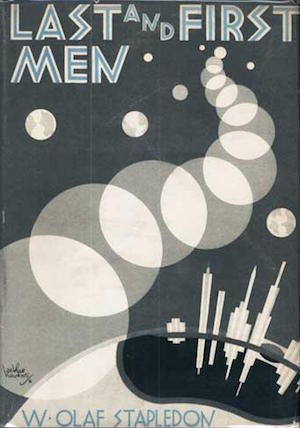
Olaf Stapledon (10 May 1886–6 September 1950) could write narrow focus novels when he wanted to. Sirius, for example, focuses on the life of an intelligent dog, while Odd John is the biography of a super-genius in a world that’s not ready for him. But Stapledon excelled at the epic: wide-focus visions of the past and future. Last and First Men covers the history of eighteen distinct human species over two billion years. Star Maker is even more ambitious; it narrates a history of the universe.
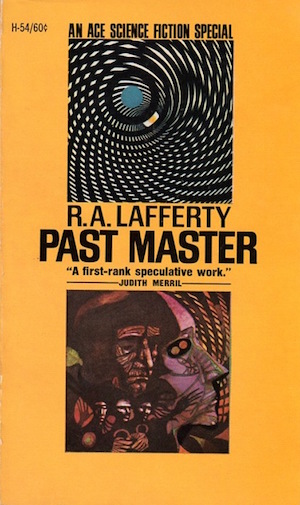
R.A. Lafferty (November 7, 1914–March 18, 2002) was not all that interested in plot. He excelled at setting and literary style. He’s not to everyone’s taste, but those who enjoy Lafferty’s work enjoy it intensely. Lafferty was sidelined by a long illness, during which time he was close to forgotten. In recent years publishers from Wildside to Centipede Press have brought his work back into print.
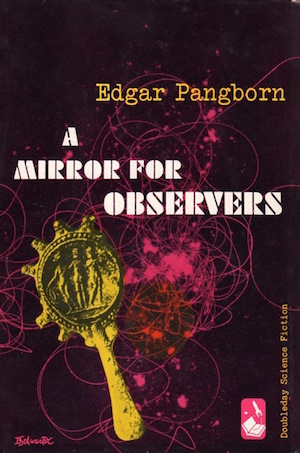
Edgar Pangborn (February 25, 1909–February 1, 1976) was active as a mystery writer for twenty years before he turned to science fiction in the 1950s. His humanist science fiction won fan acclaim. His novel A Mirror for Observers won the 1954 International Fantasy Award. Many of his later pieces form the Tales of a Darkening World sequence, set after war, plague, and climate change have reduced humanity to a tiny, barbaric remnant of today’s civilization. 1964’s Davy may be the best known in the series; I prefer the melancholy collection Still I Persist in Wondering. If read in publication order, Tales of a Darkening World betrays Pangborn’s increasingly pessimistic view of humans. Some early pieces are available on Gutenberg. SF Gateway’s Edgar Pangborn Omnibus is also in print.
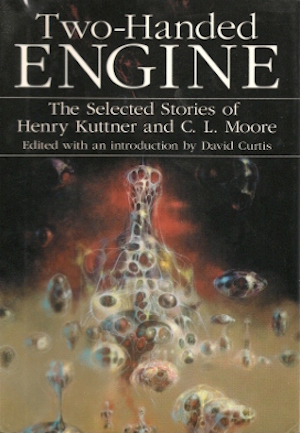
Henry Kuttner (April 7, 1915–February 3, 1958) and C. L. Moore (January 24, 1911–April 4, 1987) were both well-known authors before their mutual friend Howard Lovecraft introduced them. Once they married, they were a powerhouse writing team. Because they often collaborated, and because they sold the resulting works under whichever of their many bylines seemed most suitable, due credit for specific pieces can be difficult to establish. Thus it makes perfect sense to give them a joint award. My personal favourite of their collections is Two-Handed Engine, but it seems to be out of print. Look for the reprints of The Best of Henry Kuttner and The Best of C. L. Moore.
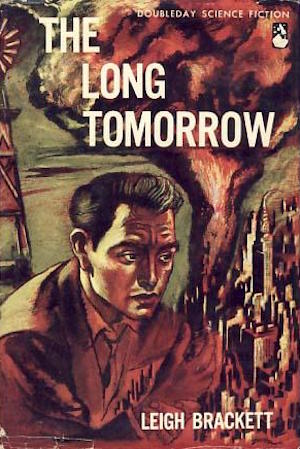
Leigh Brackett (December 7, 1915–March 18, 1978) was lauded for her planetary adventures (she moved her Eric John Stark adventures to the extra-solar world Skaith when space probes rendered her pulp-era Solar System implausible) but that was only one aspect of her work. In addition to writing SF and mysteries, she was a successful script writer. Her credits include The Big Sleep, Rio Bravo, The Long Goodbye, and an obscure little film called The Empire Strikes Back. Her planetary adventures tended to be long on action and short on clear moral boundaries. I am particularly fond of her post-apocalyptic The Long Tomorrow. Readers interested in her planetary adventures should look for the recent reprints of The Ginger Star, The Hounds of Skaith, and The Reavers of Skaith.
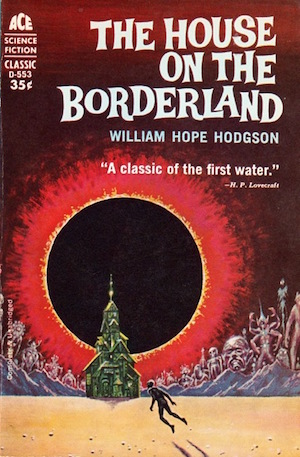
William Hope Hodgson (15 November 1877–19 April 1918) predated today’s formalized genre boundaries. One might think of him as working somewhere in the intersection of weird fantasy and cosmic horror. His best known works are the dying-Earth horror novel The Night Land and the hallucinatory The House on the Borderland. You may never have read either, but odds are you’ve read works influenced by one or the other. Hodgson died at Ypres, during WWI; hence several of his works are public domain and available at Project Gutenberg.
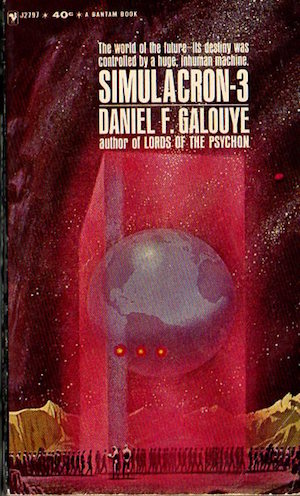
Daniel F. Galouye (11 February 1920–7 September 1976) was a journalist until health issues forced his retirement. He was prolific. Many of his stories feature protagonists with unrealized potential and nowhere near enough information about their circumstances. His Counterfeit World AKA Simulacron-3 (filmed as The 13th Floor) seems the obvious starting point. A few of his works are available at Gutenberg.
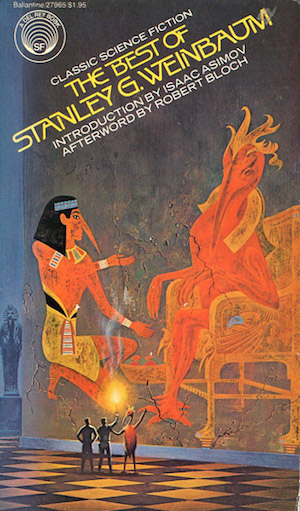
Stanley G. Weinbaum (April 4, 1902–December 14, 1935) died of cancer only eighteen months after his debut story A Martian Odyssey saw print. Although he dabbled in super-science, he seems to have by and large played fair with his readers. His oeuvre may be as close to hard SF as one might find in the 1930s. I recommend the ebook reprint of The Best of Stanley G. Weinbaum.
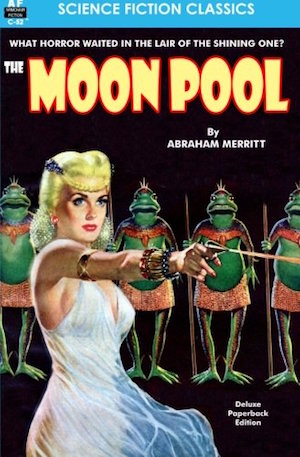
A. Merritt (January 20, 1884–August 21, 1943) found time during his active journalism career to pen eight science fantasy novels and an assortment of short stories. Readers curious about his vivid alternate worlds and, um, energetic prose could start with his classic The Moon Pool, available on Gutenberg.
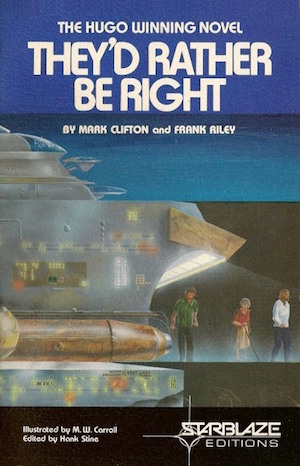
Industrial psychologist Mark Clifton (? 1906–November 1963) may be best known for winning the second Best Novel Hugo for They’d Rather Be Right, of which the less said the better. Much of his output focused on either the supercomputer Bossy (wise but distrusted by humans) and the Ralph Kennedy psionic tales. The story I’d suggest to anyone whom I didn’t actively dislike is the sentimental “Star, Bright,” whose view of super-kids is charmingly unhorrific. If you’ve annoyed me recently, then by all means track down They’d Rather Be Right.
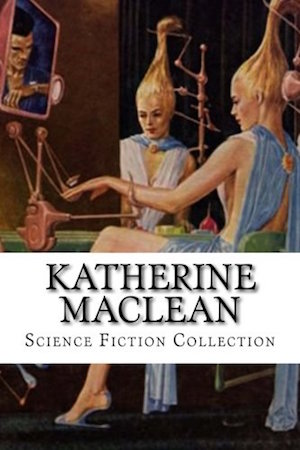
Although Katherine MacLean (January 22, 1925–September 1, 2019) also wrote novels, it was an early flurry of short pieces (most published in the 1950s) that drew her to SF readers’ attention. Stories of particular note include “The Snowball Effect,” about sociological research that proves all too successful, “Pictures Don’t Lie,” about believing one’s eyes, and “And Be Merry,” in which a woman struggles with the terrors of immortality. There are many other MacLean stories worth reading. MacLean was the first author to win the Rediscovery while still living, though she passed away in 2019.
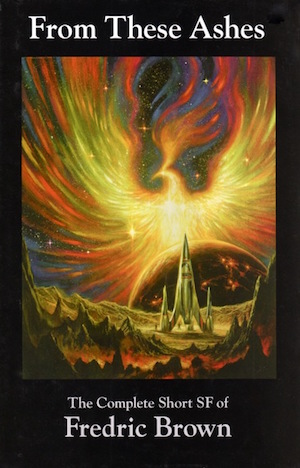
Fredric Brown (October 29, 1906–March 11, 1972) was, as previously discussed, a master of the short-short story, although he hardly restricted himself to that form. Readers interested in his novel-length material could look for his alternate universe comedy What Mad Universe, although I would lean more towards suggesting NESFA’s From These Ashes: The Complete Short Science Fiction of Fredric Brown.
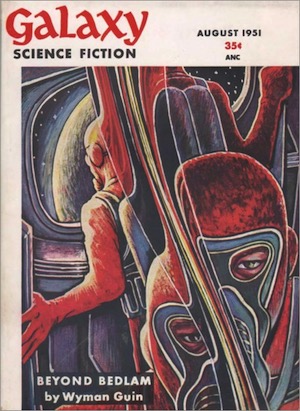
Wyman Guin (March 1, 1915–February 19, 1989) is one of two authors who have won the Rediscovery whose work I have not managed to track down. Aside from his association with Galaxy Magazine, I know little about his fiction. Alas, he seems to be very, very thoroughly out of print.
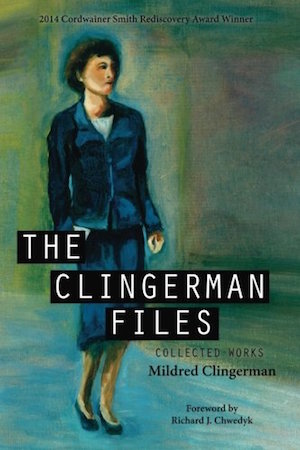
Mildred Clingerman (March 14, 1918–February 26, 1997) is the other author in whose work I am not widely read. It’s not for lack of trying, because I’ve seen her work referenced favourably over the years. But! In the interval between writing my review of the Rediscovery Award Anthology I wish existed and composing this essay, The Clingerman Files was published. Not only does it contain her previously published work, it also includes some pieces previously unpublished. A copy is even now headed my way.
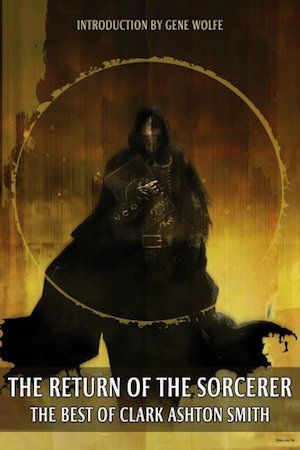
Clark Ashton Smith (January 13, 1893–August 14, 1961) was a mainstay of Weird Tales in the era of Lovecraft, Howard, and cover artist Margaret Brundage. Smith’s vivid, gleefully morbid tales featured protagonists not destined for long lives. But then, who would expect longevity for characters who proclaim
I am now at work on an apparatus by means of which, when it is perfected, I hope to manifest in their essential purity the radiations of malign force.
I can see no way in which that could go horribly wrong…
Readers new to Smith might consider Prime’s The Return of the Sorcerer.
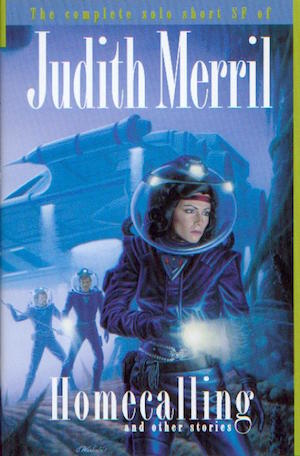
Writer, editor and activist Judith Merril (January 21, 1923–September 12, 1997) was a member of the Futurians, a fellowship of writers, editors, artists, and fans whose collective efforts guided science fiction away from Campbell’s narrow vision. Her noteworthy fiction includes the disturbing “That Only a Mother,” the co-written military SF novel Gunner Cade, and the post-holocaust Shadow on the Hearth. Readers new to Merril should look for a copy of Homecalling and Other Stories: The Complete Solo Short SF of Judith Merril.
Despite her accomplishments as a writer, it’s her role as an editor for which Merril is best known. Her variously titled The Year’s Greatest Science Fiction and Fantasy/Annual of the Year’s Best S-F ran from 1957 to 1968, followed by two Best of the Best volumes in 1970. Although there have been many Best SF annuals, Merril’s stood out for the breadth of the net she cast, drawing stories from well outside the usual borders of science fiction. She is to date the only woman to helm a best SF annual solo.
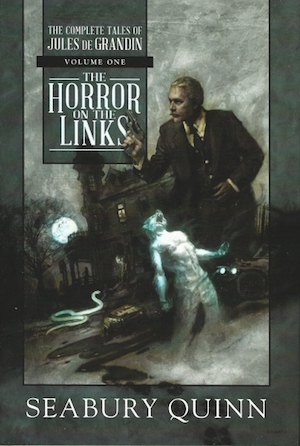
Seabury Quinn (January 1, 1889–December 24, 1969), first published in 1917, was a prolific contributor to Weird Tales (a magazine of which the judges for this award appear quite fond). Occult detective Jules de Grandin featured in many of them, enough to fill all three volumes of The Complete Tales of Jules de Grandin (Horror on the Links, The Devil’s Rosary, and The Dark Angel.).
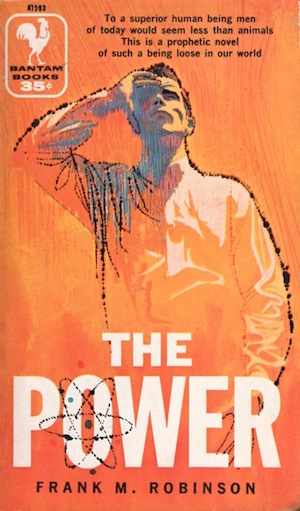
Activist Frank M. Robinson (August 9, 1926–June 30, 2014) in no way limited himself to writing fiction (his political activities won him a spot in the Chicago Gay and Lesbian Hall of Fame). Even his role in SF was wide-ranging… and long-lived. His sixteen novels ranged from psionic thriller The Power to the generation ship Bildungsroman The Dark Beyond the Stars. With Thomas Scortia he was author of several successful thrillers, ranging from The Glass Inferno (which contributed to the ensemble disaster film The Towering Inferno), The Prometheus Crisis, The Nightmare Factor, and The Gold Crew.
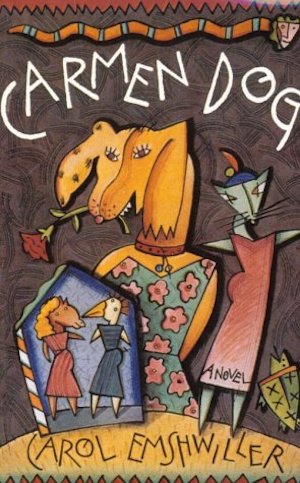
Carol Emshwiller (1921–2019) published her first story, “This Thing Called Love,” in 1955. She went to enjoy an unusually long and notably prolific career. While Emshwiller did write non-genre works, her primary focus was speculative fiction. There are to my knowledge only six Emshwiller novels: Carmen Dog (1988), The Mount (2002), Mister Boots (2005), The Secret City (2007), and the two non-genre Ledoyt Family novels, Ledoyt (1995) and Leaping Man Hill (1998). However, she produced an abundance of short fiction.
If not actually New Wave, Emshwiller was quite New Wave-adjacent. She eschewed conventional tropes and demanded effort from her readers. Readers, and jurors, rewarded her for aiming high. She won Nebula, World Fantasy, and Philip K. Dick Awards, among others.
Readers unfamiliar with Carol Emshwiller’s fiction might want to read The Collected Stories of Carol Emshwiller Volume 1 (2011) and The Collected Stories of Carol Emshwiller Volume 2 (2016), which (as you may have guessed from the title) is a two-volume set collecting Emshwiller’s short works. The 1206 pages of the set collect many enjoyable stories and include a foreword from the author herself.
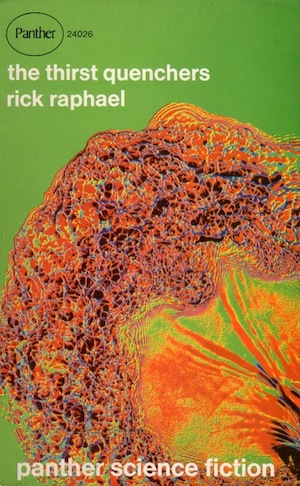
Rick Raphael (1919–1994) won the award in 2020. Raphael is in many ways the antithesis of Emshwiller. Where she leaned New Wave, Raphael embraced a more conventional approach. Unsurprisingly, Raphael’s work appeared predominantly in John W. Campbell Jr’s Astounding/Analog. Unlike Emshwiller, Raphael was not prolific. He may be the Cordwainer Smith Rediscovery Award winner with the smallest body of work: the ISFBD lists a novel, Code Three, the collection The Thirst Quenchers, and about ten short stories.
On the plus side, a small body of work makes it much easier to select a representative example. In this case, seek out Code Three, an exuberant tale of near-the-speed-of-sound law enforcement on the super-highways of an imagined future America. Not only does this book show off Raphael’s undeniable talents, it is easily available, either as a free ebook here or (alongside many other vintage works) in Jim Baen, David Drake, and Eric Flint’s retrospective SF tome The World Turned Upside Down.
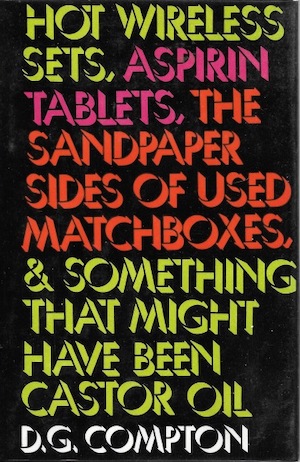
David Guy Compton, best known as D. G. Compton, (born 1930) was 2021’s recipient. Like Emshwiller, Compton was prolific across a variety of genres, his first novel being not SF but rather mystery (1962’s Too Many Murderers). Unlike either Emshwiller or Raphael, or for that matter most Cordwainer Smith Rediscovery Award recipients, Compton is still alive. Perhaps there are new works still to come.
Compton views human proclivities with an unflinching insight that in many authors reveals itself in bitter satire. Compton is less bitter, more serious. He has explored the various futures to which human ambition might deliver us. Many of those futures we would be well advised to avoid.
While it is hard to resist the appeal of a title like Hot Wireless Sets, Aspirin Tablets, the Sandpaper Sides of Used Matches, and Something That Might Have Been Castor Oil, the work that readers unfamiliar with Compton would be well advised to read would be The Continuous Katherine Mortenhoe AKA The Unsleeping Eye AKA Death Watch, available from a variety of sources. Terminally ill Katherine Mortenhoe becomes the focus of a journalistic probe, one that is commercial rather than high-minded. Her final weeks are to be recorded and transmitted for the voyeuristic delectation of bored viewers.
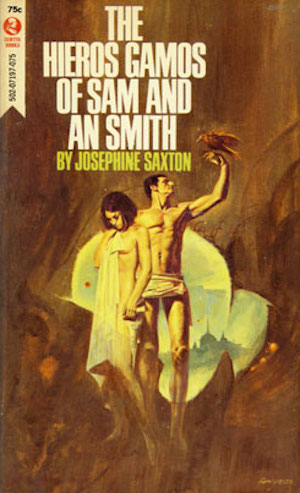
2023’s Cordwainer Smith Rediscovery Award winner is Josephine Saxton. (born 1935). Saxton’s work defies easy categorization. It’s not clear whether many of the events experienced by her protagonists were actually real or whether they were merely allegorical reflections of protagonist’s mental states. What is abundantly clear is that the author wrote from a relentlessly feminist standpoint.
While Saxton has not been an especially prolific author (at least not by the standards of your Brunners or Silverbergs), her name would have been quite familiar to readers circa 1960–1980. Her works appeared in anthologies such as Orbit, Women of Wonder, and Amazons!
After 1990 Saxton published infrequently. However, much of her older work remains available. In particular, the collections The Travails of Jane Saint and Other Stories, Little Tours of Hell, Jane Saint and the Backlash, The Power of Time, and the novel The Hieros Gamos of Sam and An Smith are available in ebook editions.
***
That brings us up to the present day! Who will be the next winner of this award? Not being a judge, I couldn’t say. But I am very curious to find out. Please feel free to suggest possible candidates (or discuss favorite works by any other authors mentioned above) in comments below.
An earlier version of this article was originally published in September 2018.
In the words of fanfiction author Musty181, four-time Hugo finalist, prolific book reviewer, and perennial Darwin Award nominee James Davis Nicoll “looks like a default mii with glasses.” His work has appeared in Interzone, Publishers Weekly and Romantic Times as well as on his own websites, James Nicoll Reviews (where he is assisted by editor Karen Lofstrom and web person Adrienne L. Travis) and the 2021, 2022, and 2023 Aurora Award finalist Young People Read Old SFF (where he is assisted by web person Adrienne L. Travis). His Patreon can be found here.










